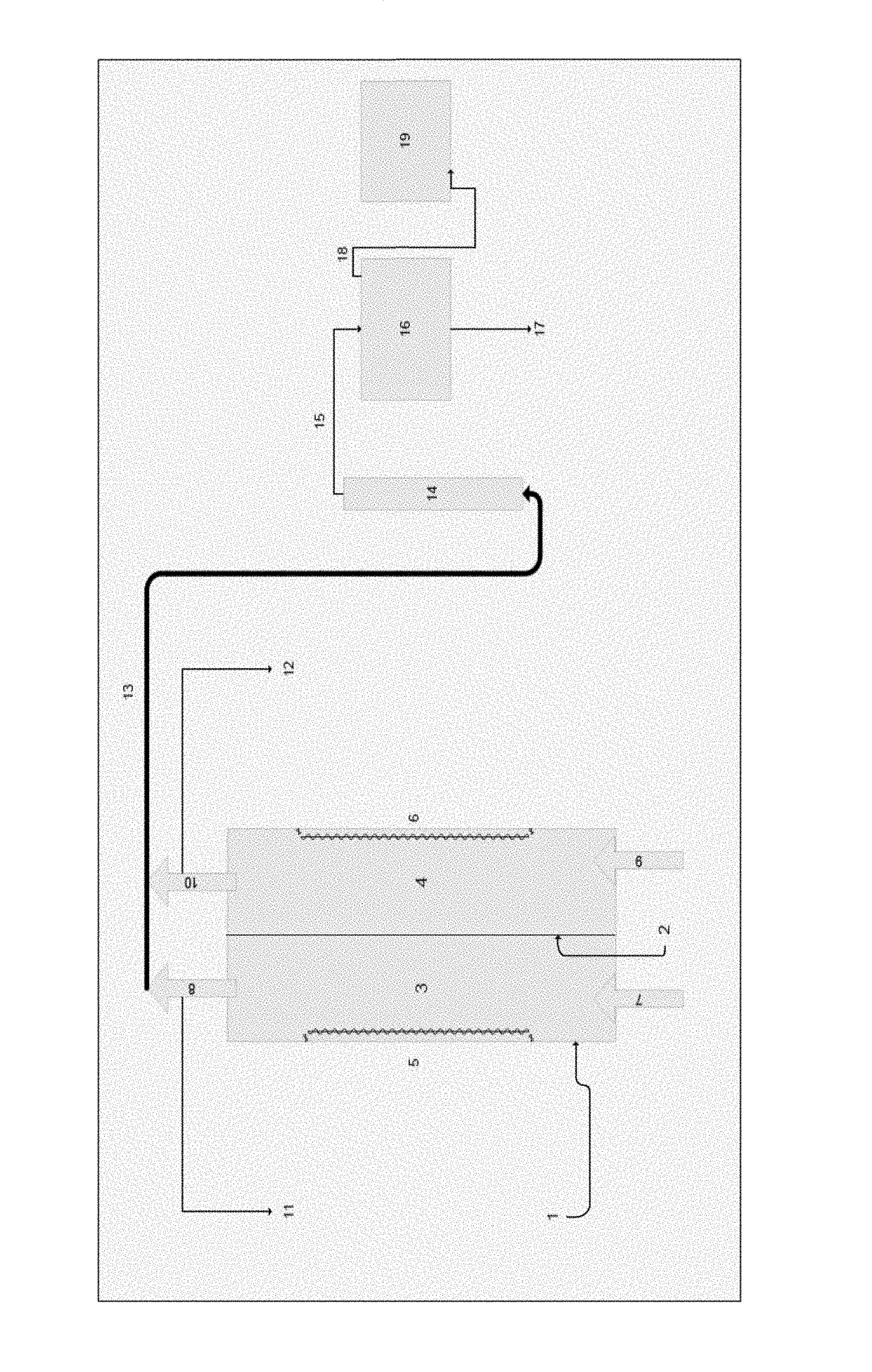Process and apparatus for generating or recovering hydrochloric acid from metal salt solutions
a metal salt and hydrochloric acid technology, applied in the field of electrochemical process for generating or recovering hydrochloric acid from metal salt solutions, can solve the problems of low concentration of hcl, acid recovery and/or removal of metal ions was not considered viable, and the precipitation is not readily precipitated
- Summary
- Abstract
- Description
- Claims
- Application Information
AI Technical Summary
Benefits of technology
Problems solved by technology
Method used
Image
Examples
example 1
[0080]550 mL of feed solution containing 142 g / L Fe as chloride, 271 g / L chloride and having a pH of less than 0 was fed into the cathode chamber of an apparatus of the invention. The solution was electrolyzed for 32 hours at 5 amps. 148 g of hydrochloric acid as recovered from the condensing chamber. The metal chloride depleted solution collected from the cathode chamber contained less than 0.7 g / L iron, 0.55 g / L chloride and had a pH of 4.3. The metal precipitate adhered to the cathode was recovered by removing the cathode and gently scraping or brushing the precipitate from the cathode.
example 2
[0081]1 liter of feed solution containing 142 g / L iron as chlorides, 94.3 g / L free hydrochloric acid, was fed into the cathode chamber of an apparatus of the invention. The solution was electrolyzed for 54 hours at 6 amps. More than 99% of the chloride present in the feed solution was recovered as clean hydrochloric acid at a concentration of approximately 100 g / L. The treated feed solution recovered from the cathode after the process was complete contained less than 0.3 g / L iron and 0.42 g / L chloride. The metal hydroxides were recovered from the cathode as adherent precipitate by gentle scraping or brushing.
example 3
[0082]1 liter of solution containing 50.7 g / l chloride, 2.7 g / l calcium, 716 ppm magnesium, 1330 ppm strontium, 1225 ppm barium, and 37.99 g / l free hydrochloric acid, was fed into the cathode compartment of an electrolytic flow cell and electrolyzed for 6.25 hours at 6 amps. The treated solution contained 4.08 g / l chloride, 1 ppm magnesium, 1.94 g / l calcium, and all original strontium and barium. 38.01 g of hydrochloric acid was recovered as pure hydrochloric acid, magnesium and calcium were recovered as hydroxides. The total power consumption was 112 watt hours, and the pH of the final treated solution was >10.
PUM
| Property | Measurement | Unit |
|---|---|---|
| temperature | aaaaa | aaaaa |
| pressure | aaaaa | aaaaa |
| pressure | aaaaa | aaaaa |
Abstract
Description
Claims
Application Information
 Login to View More
Login to View More - R&D
- Intellectual Property
- Life Sciences
- Materials
- Tech Scout
- Unparalleled Data Quality
- Higher Quality Content
- 60% Fewer Hallucinations
Browse by: Latest US Patents, China's latest patents, Technical Efficacy Thesaurus, Application Domain, Technology Topic, Popular Technical Reports.
© 2025 PatSnap. All rights reserved.Legal|Privacy policy|Modern Slavery Act Transparency Statement|Sitemap|About US| Contact US: help@patsnap.com

